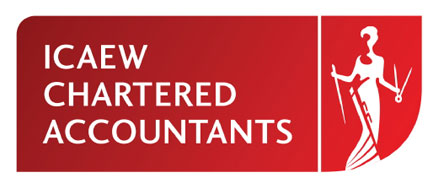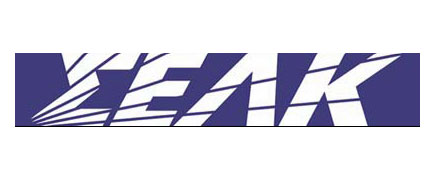Gazprom Trips in India as Shale Upends Asia Gas Markets
March 19,2012
OAO Gazprom (GAZP), the world’s largest natural-gas exporter, is struggling to get a foothold in the Asian markets leading global economic growth.
The Russian company’s plan to supply liquefied natural gas to India from 2016, the year the U.S. is set to start gas exports, is faltering after buyers said they’re looking for cheaper fuel fromNorth America. Last year, decade-long talks to supply pipeline gas to China foundered over price disagreements.
“Gazprom has a major problem of having a fixed view on what the price of gas should be, irrespective of market conditions,”Jonathan Stern, chairman and senior research fellow at the Oxford Institute for Energy Studies, said by e- mail. “If this continues, it will create increasing problems for Russian gas exports.”
Keen to protect Russia’s position in world gas markets, President-elect Vladimir Putin ordered export monopoly Gazprom to diversify into Asia and develop an LNG business. The Moscow- based company cut this year’s target for exports to Europe, which accounts for more than half of Gazprom’s gas revenue, as the debt crisis holds back economic growth and imports from the Middle East increase.
Asia accounts for more than 60 percent of global demand for LNG, gas chilled to a liquid for transport by ship. The region imported 177.7 billion cubic meters of the fuel in 2010, valued at more than $86 billion today, based on data from the U.S. Federal Energy Regulatory Commission. Buyers are turning to North America, where record production from shale deposits has driven down U.S. prices.
“The global gas market is integrating and that has implications for prices,” Christof Ruehl, BP Plc (BP/)’s chief economist, said at a conference in Moscow last month.
First Buyer
GAIL India Ltd. (GAIL), the country’s largest gas supplier, became the first Asian buyer of U.S. natural gas in December when it signed a 20-year deal with Cheniere Energy Partners LP (CQP), which is planning the first U.S. export terminal. The contract, targeting 3.5 million tons a year starting in 2017, is linked to the day- to-day U.S. benchmark gas prices, which fell to a 10-year low of $2.21 a million British thermal units in January. It will also include a fixed component.
Prices of LNG in India are at $13.65 a million Btus this year, according to FERC.
Gazprom had agreed on preliminary long-term LNG supply deals last year with GAIL, Petronet LNG Ltd. (PLNG), Gujarat State Petroleum Corp. (GSPC), and Indian Oil Corp. (IOCL) for a total of as much as 10 million metric tons annually, with contracts to be signed within six months. In contrast to Cheniere, the Russian supplier ties long-term prices to oil, a policy some of its European customers are fighting. China has refused to pay Russia a price on a par with the European level.
Gas Price Negotiations
“We have started price negotiations with Gazprom for the LNG we plan to buy from them,” A.K. Balyan, chief executive officer of Petronet, India’s biggest gas importer, said by telephone from New Delhi. “We will have to see how it compares with the U.S. and other markets.”
Ventures in Australia and Qatar, the world’s biggest LNG exporter, sell the liquid fuel to Asian buyers at prices linked to the so-called Japan Crude Cocktail, a 40-year-old index. Transporting gas from the U.S. would be less expensive than Asian LNG, D.K. Sarraf, managing director ofOil & Natural Gas (ONGC) Corp.’s overseas unit, ONGC Videsh Ltd., said March 1, as it nears an agreement to buy its first U.S. shale gas asset.
‘Back Row’
India is “not going to be easier,” Valery Nesterov, an analyst at Troika Dialog in Moscow, said in a phone interview. “You have to beware of the situation developing like with China, where we’re in the back row with insignificant volumes.”
The signing will happen this year, Gazprom Deputy CEO Alexander Medvedev said in an interview in New York on Feb. 16. The Indian deal “is in the final stage of preparation” with contract prices indexed to oil, he said.
Gazprom’s marketing and trading unit wants to gain market share in India because demand may grow an average 6.5 percent annually, not far off the 7.7 percent forecast in China, according to the International Energy Agency.
Today, India’s largest supplier is Qatar. The country imports about 25 percent of its gas requirements as its own output from offshore deposits is declining. Gazprom has supplied occasional cargoes to India since 2007.
While Gazprom aims to boost its share in Europe’s gas market to 32 percent by 2030 from 27 percent last year, the European Union has sought to diversify suppliers. With European demand suppressed because of the economy, Gazprom lowered an export target for this year to 154 billion cubic meters from 164 billion expected in November.
Sakhalin Plant
The Indian campaign is part of Gazprom’s drive to gain 14 percent of world LNG trade by 2030, a market that’s set to grow at double the pace of global gas output.
Gazprom exports LNG from its share of the Sakhalin-2 plant off Russia’s Pacific coast, mostly to Japan and Korea, and buys the fuel from other sources for deliveries to India and other Asian markets. Its total LNG trade rose 25 percent to 3 billion cubic meters in 2011, a presentation to investors last month showed. That’s less than Hong Kong’s demand alone in 2010, BP’s Statistical Review of World Energy shows.
The state-controlled gas producer has yet to make a final decision on adding to its liquefaction capacity since agreeing to buy control of the Sakhalin-2 venture from Royal Dutch Shell Plc at the end of 2006.
Gazprom is looking at expanding the Sakhalin plant north of Japan, building a plant in Vladivostok on the Pacific coast and developing Arctic projects. Until then, the company is boosting global LNG trade by securing fuel from third parties.
Indian Prospects
Gazprom shares have risen 16 percent this year to close at 198.78 rubles in Moscow today. They fell 11 percent in 2011 as the European debt crisis curbed prospects for demand growth. Net income probably rose 25 percent last year to almost $40 billion, driven by higher fuel prices, the company said in February. Gazprom hasn’t reported fourth-quarter earnings yet.
Extraction of gas from shale deposits has allowed the U.S. to overtake Russia as the world’s biggest producer. The surge in output pushed U.S. prices to a 10-year low and increased availability of the fuel for export. The trouble for India and other gas buyers may come as U.S. manufacturers lobby to curb exports and keep prices low.
“Currently it’s cheaper to buy LNG from the U.S.,” Petronet’s Balyan said. “But there’s no LNG there yet and we don’t know how much export the government will allow.”
Petronet said it’s in discussions with suppliers in the U.S., including Cheniere Energy and Freeport LNG Development LP. GAIL India is also negotiating its second supply contract, seeking supplies from a Freeport LNG project scheduled to start in 2016.



